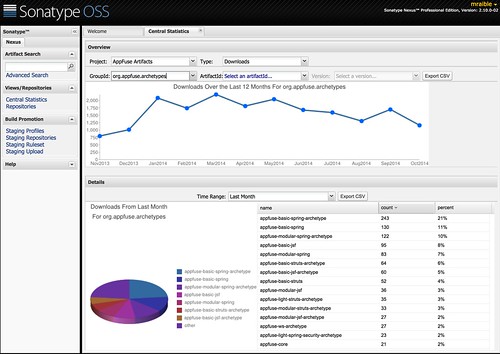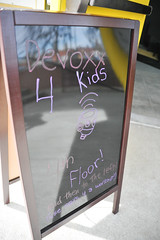Just over six years ago, I wrote a popular post titled How To Setup Your Own Software Development Company. I'd just left LinkedIn a few months earlier and was enjoying consulting life again, working with a group of friends at Evite. In the article, I wrote about how I liked consulting because it forces you to keep your skills up-to-date and it pays a lot better. I also talked about the type of legal entity you should form (I have an S Corp), what business insurance you should buy, what I had for health insurance and how I automated payroll and tax payments.
I recently received an email from a reader, asking me if I had any updated thoughts.
It's been nearly six years since you wrote the article about starting your own business ... and thanks, by the way.
I am starting my venture into independent contract work as a software engineer (Java technology) in California and most likely will setup an S corp entity.
Seeing that you wrote this six years ago and things have considerably changed in the U.S. (economy, health care, etc.), I was wondering if you had some updated thoughts to share, perhaps some learned lessons even.
And also, I have questions about business insurance: what type of insurance should I opt for? Is there really an umbrella insurance out there? Or does each (or many) clients out there dictate the insurance you need?
Yes, a lot has changed in the last six years. The economy has improved and health care costs have risen. Through this time, I've been able to continue to operate as an independent software developer and keep the contracts flowing. Personally, the biggest changes in my life have been outside of work. I met an exceptional woman, traveled to conferences all around the world with her, got married, traveled some more, then bought a VW Westfalia so we could have lots of fun traveling in our own backyard. All the while, I've worked for some great clients. I built a team of hot shots at Time Warner Cable (many of them still work there), I skied the awesome powder of Utah while working at Overstock and I enjoyed a long-term contract at Oracle. After Oracle, I got into the healthcare industry and I've been working in it ever since.
In fact, I just finished working for a healthcare company last week and I'm on the hunt for my next gig in April. Check out my LinkedIn profile if you'd like to see my résumé.
I've learned quite a few lessons over the last several years. As an independent developer, the biggest thing I've learned is marketing is key. I've always known this, but I've been reminded of its importance a few times. When I worked at Taleo (after Overstock), I was on a 3-month contract that turned into a 9-month contract that got a 1-year extension when Oracle bought them. The work was challenging, but the application was outdated. Getting them to adopt new technologies like Bootstrap and AngularJS was difficult. When Oracle took over, they offered me a 1-year contract at a great rate. I accepted, never thinking it would be difficult to get paid from someone like Oracle. It took them over three months to pay my first invoice and it took me another three months to get payments flowing regularly. I felt like I was trapped. I felt like I could quit, but that wouldn't speed up the process of getting my invoices paid. From this experience, I'm hesitant to start with any contract that's longer than three months.
During my time at Oracle, I didn't blog as much as I had previously (because the day-to-day work wasn't that exciting), but I did still speak at conferences. Last year, I took the year off from speaking at conferences altogether. Speaking is an excellent marketing tool. Because of my lack of speaking, I saw a downturn in contract opportunities in Q4 last year.
As far as health insurance is concerned, I continued to have a disaster prevention plan, with a $5K per year deductible. I paid around $300/month for this, and rarely used it. By riding my bike to my office in downtown Denver, and skiing a bunch in the winter, I felt like I was pretty healthy. After I stopped eating sugar last fall, I became much healthier. So much healthier that I've stopped taking high blood pressure medication. Today, I don't pay for health insurance. Trish went back to IT Security Sales in November and she was able to get me on her company's plan for $100 cheaper than what I was paying. I didn't have dental insurance for the last five years and I did have to shell out $5K for a tooth implant at one point.
For business insurance, I have the Business Owner's Policy from The Hartford. I pay around $600/year and I've gotten that back when I've had laptops stolen or accidentally killed my iPhone. I've got automated backups going all the time, so I haven't lost any data in several years. This insurance policy and its liability coverage has been "good enough" for all my clients, including the big ones.
I think the biggest lesson I've learned in the last several years is that the best way to be rich is to be rich in time. I've always dreamed of making $500/hour and working 20 hours per week. While $500/hour sounds crazy, you know there's consultants out there that are making that kinda cash. They're probably not in software, maybe they're political consultants, or former professional athletes, but those consulting rates do exist. In software, there's certainly companies that bill those kinda rates. My rates for the last several years haven't been that good, but they've been pretty awesome.
Earlier this year, I had the opportunity to work 20 hours per week instead of 40. It was one of the greatest work-life experiences I've had to date. I was still able to pay all my bills, and I had time during each-and-every-day to do something fun. When working 40 hours per week, exercising and cooking dinner were somewhat of a chore. When I flipped to working less, work became the chore and exercise and cooking became the fun parts of my day. I read somewhere recently that if Americans valued health over wealth, we'd be a lot better off. I felt like I did this when working less and that I was rich in time.
Related to feeling better over making more, I've started to target employment opportunities that offer a good team to work with. For the last year, most of my contracts have been with remote clients, where they haven't required me to travel onsite. While this sounds great in theory, I do miss the comradery that exists when working with a team. Working with someone over a Skype/HipChat call is nothing like sitting next to each other and cracking jokes while writing code. Don't get me wrong, I love remote work, but I do think it's important to be onsite and collaborating face-to-face at least once per month.
To those individuals looking to start their own Solopreneurship, I hope this advice helps. It's been a great experience for me.











